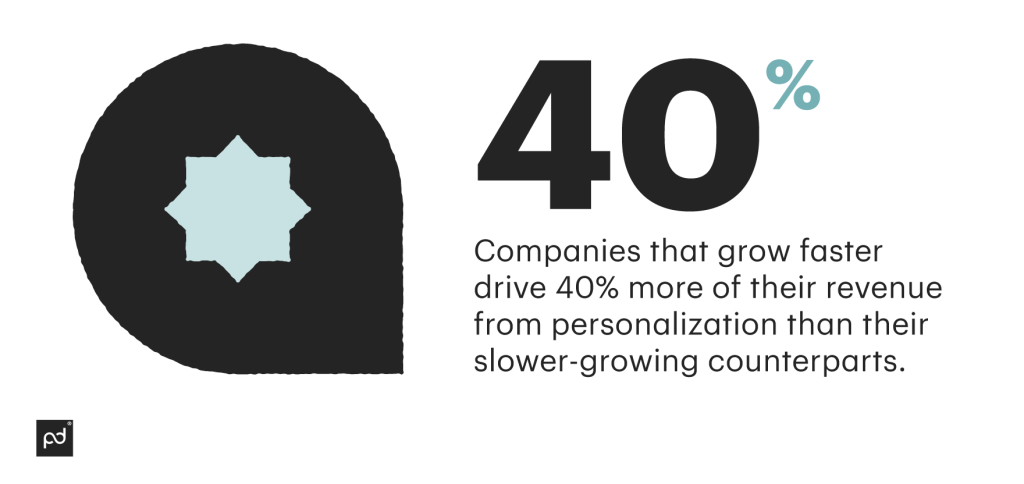Probably the most popular approach to complex B2B sales, solution selling has been around for decades.
It is still being taught to many sales reps around the world, and there are compelling reasons to do so.
However, since its founding, a lot has changed.
Read this article to discover how the solution-selling methodology fares now, how top performers adapt it to modern times, and where to learn more about this approach.
Solution selling methodology in a nutshell
Simply put, solution selling means analyzing the customer’s pain points and offering products or services that will address those points.
This methodology can work both for prospects that aren’t yet aware of their problems and for those that know what they want.
For example, people used to want faster horses to get from point A to point B faster, but a certain Henry started selling them cars and did pretty well.
Solution selling implies that the salesperson focuses not on technical characteristics, but on how a product or service will alleviate the customer’s pain or allow them to exploit an opportunity:
- This software development kit will allow you to save up to 50% of development time and decrease the amount of money you risk.
- Our cybersecurity services will protect your customers’ personal data, which means protecting you from lawsuits and fines.
- LinkedIn advertising allows precise targeting, meaning you can contact the decision-makers directly and lower the costs of customer acquisition.
The typical process usually goes like this:
- Find prospects whose problems align with the solution that the company is selling.
- Select those who are aware of the problem and are actively looking to solve it (read: buy).
- Nurture a contact within the customer’s organization. They will help with learning the details of the situation and will promote the solution internally.
- Learn the specific customer’s problems by asking open-ended questions.
- Offer a tailored product or service.
- Close the deal.
Pros and cons of solution selling
Like any other methodology, this approach has its advantages and disadvantages. These are the things going for it.
1. Personalization
The entire premise of solution selling is to address the issues of a specific customer instead of pushing a one-size-fits-all product.
Personalization has a strong effect on sales effectiveness.
The fastest-growing companies get 40% more revenue out of it than their slower counterparts.

2. Simplification
This allows for selling complex products and services in a way that doesn’t burden customers with technical mumbo-jumbo and focuses on tangible benefits instead.
That’s why it is especially effective in software development, the chemicals industry, medtech, and other business niches.
3. Long-term efficiency
Solution selling appeared in the 1960s and is still common today. This speaks to its reliability.
However, there are also disadvantages.
1. Higher requirements
This approach demands more from the salespeople.
Not only must they know their product or service well, but they also have to be good at analyzing customers and empathizing with their issues.
2. Customers are better prepared
Procurement departments are better at determining the company’s needs.
This results in very detailed RFPs, which cause salespeople to compete on price alone instead of offering solutions.
3. Longer research
Studying customers and their needs by definition requires a lot of time and effort.
This implies a longer sales cycle, higher risk in case the deal falls through, and higher acquisition costs.
The new solution selling
Recently, solution selling has changed.
While the core idea of offering tailored goods and services remains, the market is different, and it forces the sales teams to adapt.
The classic methodology goes like this:
- Determine the pain points of the niche. Finding the issues common to many or most companies in the industry is a good start.
- Determine the pain points of the specific customer. Use the information gained through the previous step to prepare a questionnaire. It will help you learn the problems that the specific customer is facing. The initial questions should be open-ended and direct both you and the client toward the existing issues in their business.
- Nurture a contact. Get a person from the client’s company, preferably a stakeholder, who will help you promote your service/product within.
- Ask and qualify. Use a call or a meeting to discuss your offer and see whether you are a good fit for a specific company (and vice versa).
- Address the issue. Demonstrate how your solution can help the client and show the results it could bring.
- Close the deal. Address any objections and stress how the customer can benefit from your solution.
However, many customers now know their problems, as well as the likely solutions to rectify them.
Many typical questionnaires have become cliched and often cause clients to feel pushed towards a specific solution, which is contradictory to the idea of a tailored approach.
Still, solution selling remains viable and effective, as long as it evolves to modern standards. This is what the top-performing salespeople do now.
1. Refocusing away from the old criteria
Traditionally, salespeople were taught to target clients that knew what their goals were, knew that they needed to change something, and had a clear procurement process.
This helped gauge the probability of the deal, as such criteria are relatively easy to check.
No wonder leads fitting them end up at the top of the scoring charts.
However, the top 20% tend to focus on different issues.
First, they prefer the leads and prospects that are undergoing some sort of change: a buyout, a restructuring, or a change in management.
This condition in itself is an opportunity, as the overall drive toward reinvention makes the organization more receptive to accepting something new.
Targeting such customers allows star performers to throw in disruptive ideas and lead the conversation instead of simply reacting to RFPs.
Second, they look for companies that are agile and can make procurement decisions quickly when presented with a compelling case.
Following any procedure that results in detriment of the performance is harmful both to the organization and the salesperson’s quota.
Overall, this sales approach focuses on taking charge and showing the customers something different from what they expected.
It helps avoid the “RFP trap” (replying to an RFP only to have the contract awarded to another, more favored vendor), and allows to present both the salesperson and their company as insightful experts in their field.
2. Forming relationships with different kinds of people
The traditional solution-selling approach suggests that the salesperson finds an “advocate” within the customer company.
That advocate should be someone who fits a number of criteria (accessible, willing to share information, can influence other people, etc.), and who will help close the deal by pushing for it internally.
However, many sales professionals go for the more accessible ones and ignore those who critically pick their offers apart, ask tough questions, and turn a sales call into an interrogation.
This can be a mistake because thorough questioning is a sign of engagement, rather than hostility.
Contacts that go deep with their inquiries often want to understand the offer and learn what value it can bring to their organization.
Explaining everything in detail and proving that value is a way to bring the person over to your side and gaining an important ally.
3. Teaching customers
A sales team usually has way more experience in selling a solution than a prospective customer has in buying it.
This experience is both positive and negative.
On the one hand, it allows them to anticipate potential problems and objections and address them before they appear.
On the other, it often leads to cases of the “curse of knowledge,” or passiveness, when a salesperson expects the other side to walk them through a deal.
The top reps arrive as experts and aim to provide insights about the customer’s company, to the company.
They don’t ask how the buying or decision-making process for these solutions usually goes — they describe how they envision it and let the interested stakeholders champion it internally.
Often, this is the first time the company even buys a solution like that, so coaching it along and guiding it through the buying process already means providing value.
Again, this comes to taking charge and offering more than the client expected, though it is rarely seen as such.
Books on solution selling
What to read up on and learn more about this sales methodology?
All these books have been highly rated by those who bought them, so it is reasonable to assume they contain a considerable value.
1. “Solution selling: Creating buyers in difficult selling markets” by M. Bosworth.
Written by Michael Bosworth, an accomplished sales manager, and published in 1995, this book is one of the most popular works on solution selling.
It contains a step-by-step program that is supposed to increase the rep’s chances of closing the deal.
Instead of pushing a sale, Bosworth recommends helping customers make a buying decision — an important difference.
It also contains advice on processing common objections, ways to make conversations clearer, and other nuggets of wisdom.
It is almost 30 years old, so you should adjust what you read to fit the modern era.
However, the core principles are still valid, and the book is still a worthy read.
2. “The challenger customer” by B. Adamson, M. Dixon, P. Spenner, and N. Toman.
“The Challenger Customer” was written by a collective of authors who held leadership positions at CEB (Corporate Executive Board) — a high-profile consulting company later acquired by Gartner.
It focuses on the more modern version of the solution-selling process, especially the part where the rep is advised to look for potential allies who will challenge their ideas.
The book also describes many sales techniques proven by real salespeople with real customers, as well as research data.
It contains a lot of valuable insights, though it suffers from redundant information — a consequence of having many people working on one manuscript.
3. “The new solution selling” by K. Eades.
This is a sequel to the previous book on the subject by the same author — Keith Eades, CEO of Sales Performance International, a prominent consulting company.
It reiterates many of the points of its predecessor, so some buyers complain about not getting as much value from it as they expected.
However, it is great for people new to the concept, as it is informative and clear.
The ideas are explained well, and there are actionable insights that readers can use in their work right away.
It also includes a workbook to help apply its contents in real life.
4. “Solution selling: The strongman process” by E. Wal.
Ed Wal is another accomplished sales leader who decided to share his expertise through a book.
This one was published in 2016, so it is relatively modern and doesn’t require much adjustment to current conditions.
“The Strongman Process” presents a detailed and effective program that fits any product.
It is especially recommended for complex B2B deals and is characterized as “no-nonsense” and “to the point” by its readers.
The book includes specific methods on pretty much all aspects of a sales rep’s work, from researching the buyer’s needs to organizing meetings and negotiating.
It’s a valuable read for the modern B2B professional.
Conclusion
Despite some claims that solution selling is outdated or even dead, the fact is it has evolved to something more in step with the current way of doing business.
The core ideas (determine the prospect’s needs by asking the right questions, offer a fitting solution, show case studies, and close deals) are as relevant as ever.
If you follow the example of the top performers who target companies embracing change, act customer-centric by coaching their leads, and aim to ally with stakeholders who ask tough questions, you can attain your quota and hone your sales skills.
Originally published June 4, 2019, updated November 25, 2022
Disclaimer
PandDoc is not a law firm, or a substitute for an attorney or law firm. This page is not intended to and does not provide legal advice. Should you have legal questions on the validity of e-signatures or digital signatures and the enforceability thereof, please consult with an attorney or law firm. Use of PandaDocs services are governed by our Terms of Use and Privacy Policy.


